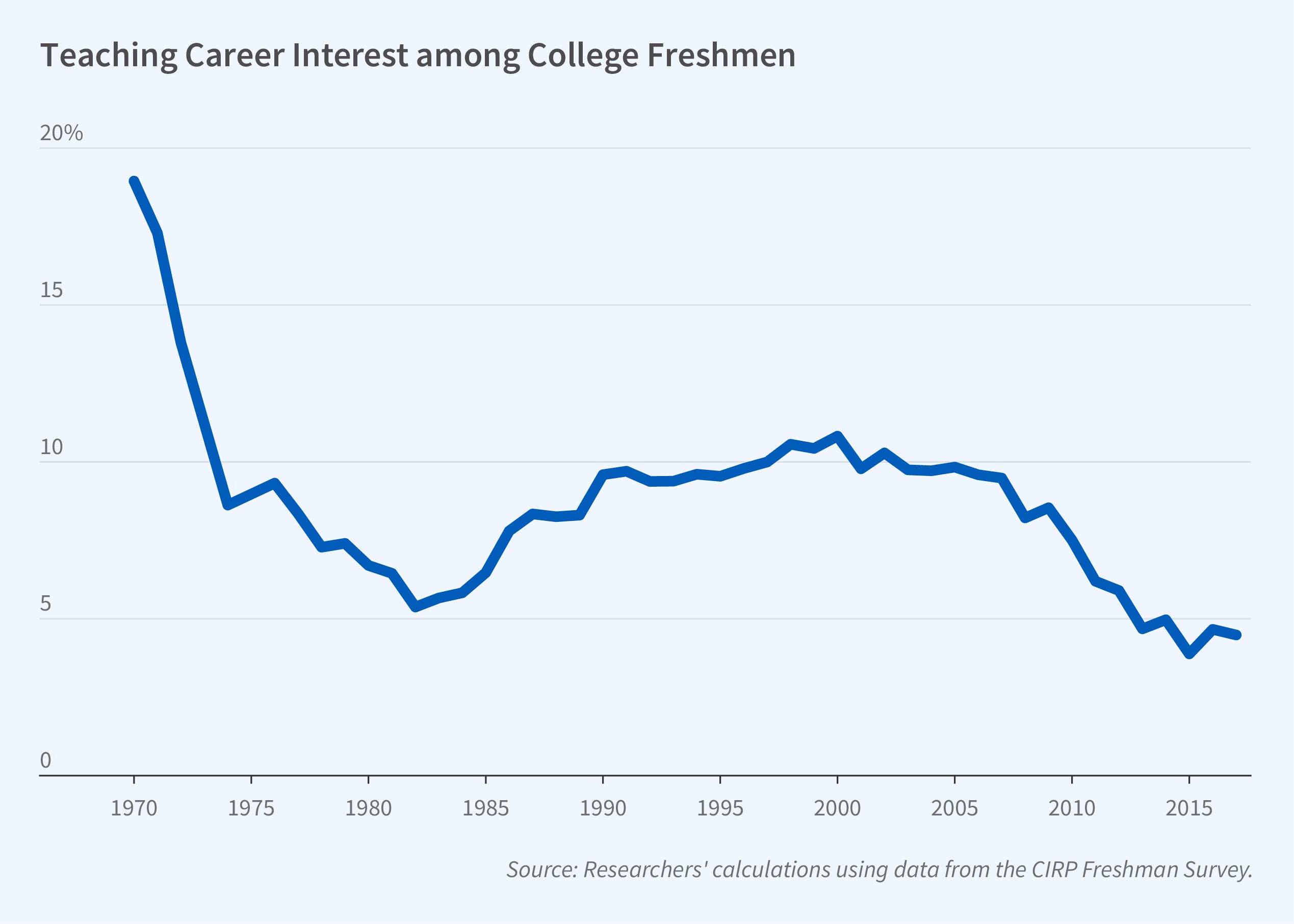The Declining Status of the Teaching Profession

Over 5.4 million Americans, or more than 8 percent of the college-educated workforce, teach in K–12 schools. Teachers play a central role in the creation of human capital and the training of the future workforce. Despite these important functions, in The Rise and Fall of the Teaching Profession: Prestige, Interest, Preparation, and Satisfaction over the Last Half Century (NBER Working Paper 32386), Matthew A. Kraft and Melissa Arnold Lyon find that the status of the teaching profession has declined in the last two decades and is at or near half-century lows. The researchers focus on K–12 schoolteachers in the US and examine a range of nationally representative data sources starting in the 1970s. They analyze public perceptions of occupational prestige, expressed interest among students, education degrees and licenses awarded to prospective teachers, and job satisfaction among current teachers. Trends in these measures have been remarkably consistent over the past 50 years, showing a rapid decline in the 1970s, a swift rise in the 1980s extending into the mid-1990s, relative stability, and then a sustained decline beginning around 2010.
Teachers’ prestige and job satisfaction, as well as student interest in the profession and the number of college graduates earning teaching degrees, are currently near 50-year lows.
During the late 1970s, the number of Americans who viewed the teaching profession as having “considerable” or “very great” prestige fell from 67 percent (1977) to 54 percent (1981). It gradually rebounded, reaching 79 percent in 1998. Since 2010, it has once again declined sharply, reaching just 58 percent in 2022. Answers to questions about whether parents would like their child to become a teacher show broadly similar trends, dropping from 75 percent who were in favor in 1969 to 46 percent in 1983, recovering to over 65 percent in the 1990s, then falling sharply after 2011 to only 37 percent in 2022.
These patterns align with student interest in teaching, preparation for the profession, and job satisfaction. While 22 percent of college freshmen were interested in teaching careers in the early 1970s, only 5 percent were in 1982. Interest in teaching doubled by the mid-1990s and has dropped since 2010. While 25 percent of bachelor’s and master’s graduates earned education degrees in the early 1970s, only 12 percent did so in 1987. In 2020, the share was just 8 percent. The number of licenses issued to new public school teachers shows a similar pattern, peaking at 320,000 in 2006 and declining to 215,000 in 2021. In 2001, 52 percent of teachers reported high job satisfaction, but only 12 percent did so in 2022, as the COVID-19 pandemic was winding down. This satisfaction measure did rebound to 20 percent in 2023.
The authors explore a range of possible interrelated causes of these dynamic trends. Notably, fluctuations in real teacher wages align closely, falling 13 percent in the 1970s before rising and plateauing in the 1990s and early 2000s, then declining again after the Great Recession. The rising cost of attending college, coupled with stagnant wages for teachers, has increased the relative cost of tuition from 10 percent of teachers’ average salary in the early 1980s to 27 percent in the late 2010s. This may have deterred some students from pursuing teaching, given that all 50 states require a bachelor’s degree for teacher licensure. Declines in per-pupil spending and significant teacher layoffs during recessions may also have made teaching less attractive. The perceived loss of job security and professional autonomy due to accountability reforms also accord with recent declines. Finally, the researchers point out that safety concerns may have contributed to a drop in satisfaction, as the frequency of threats and attacks on teachers rose modestly around 2010 and the number of school shootings has spiked in recent years.
—Leonardo Vasquez


